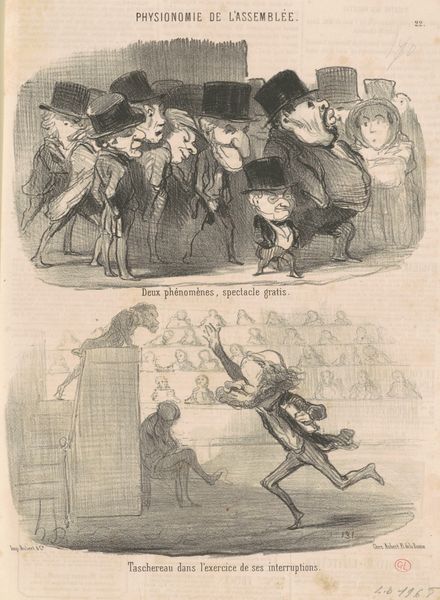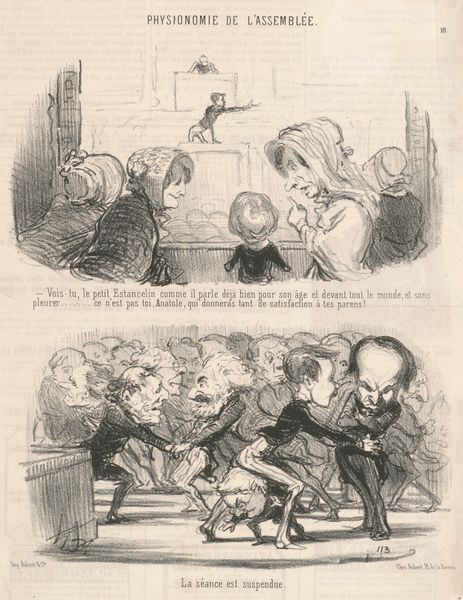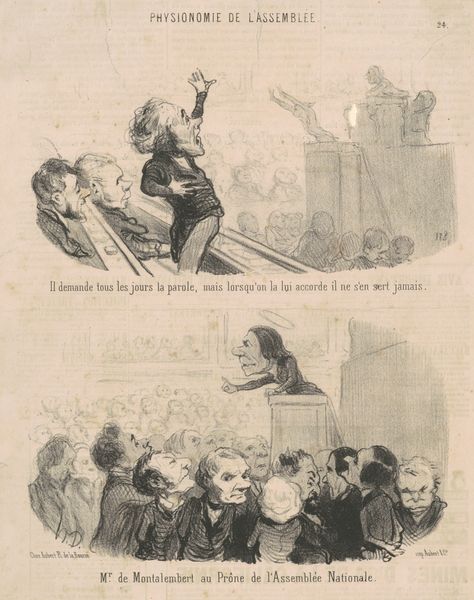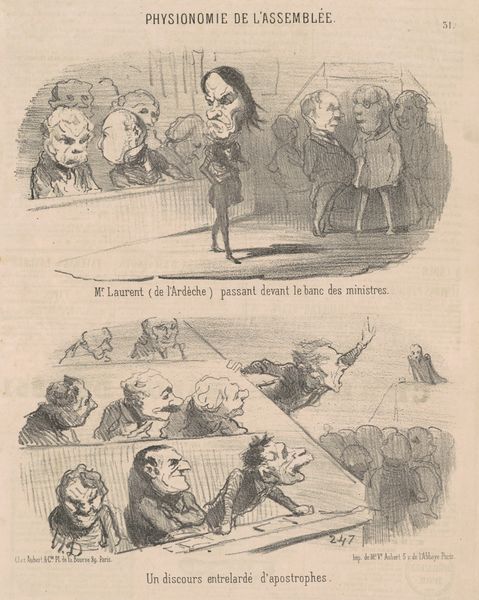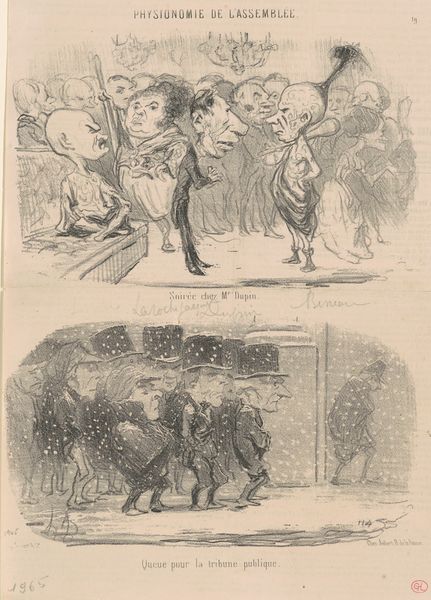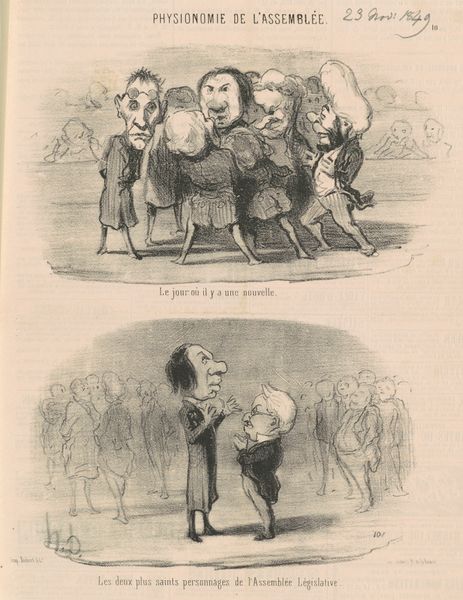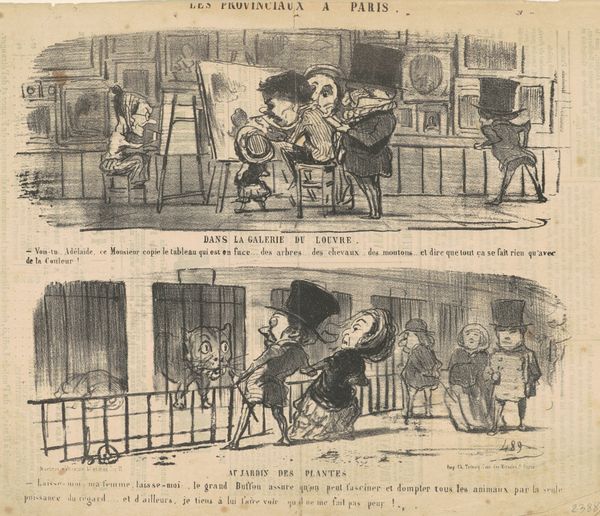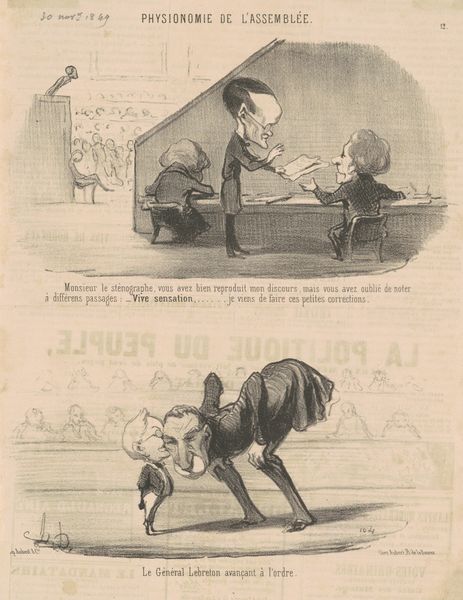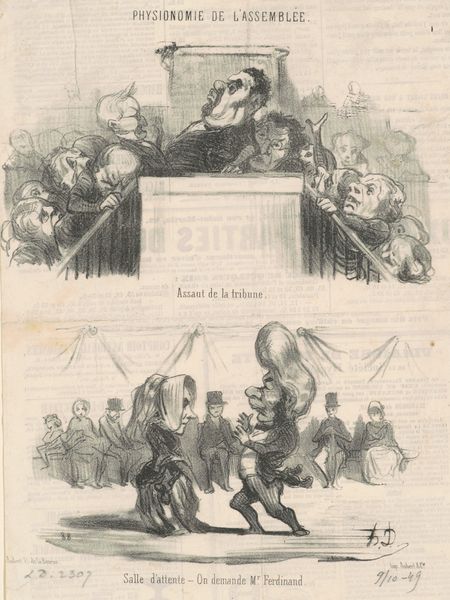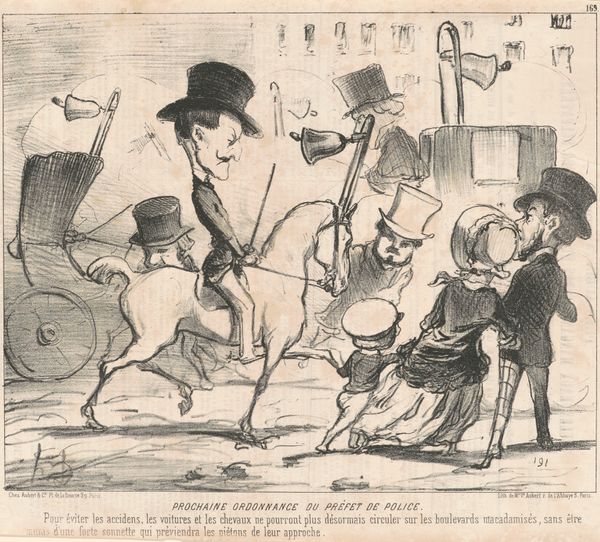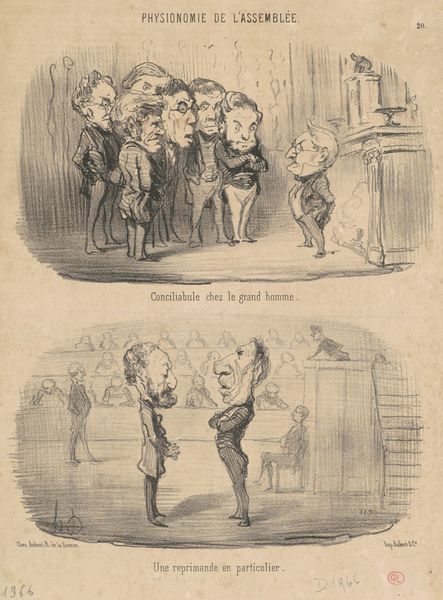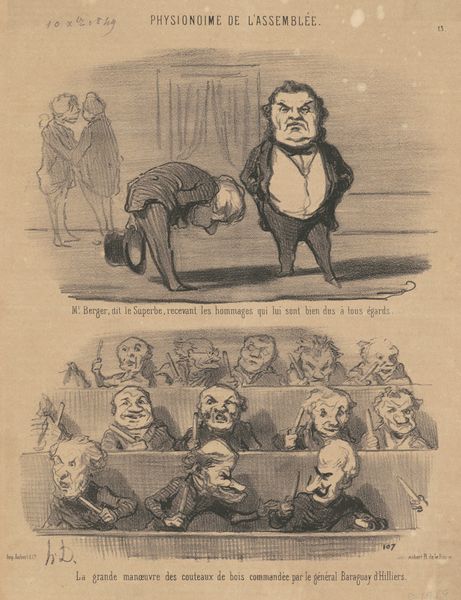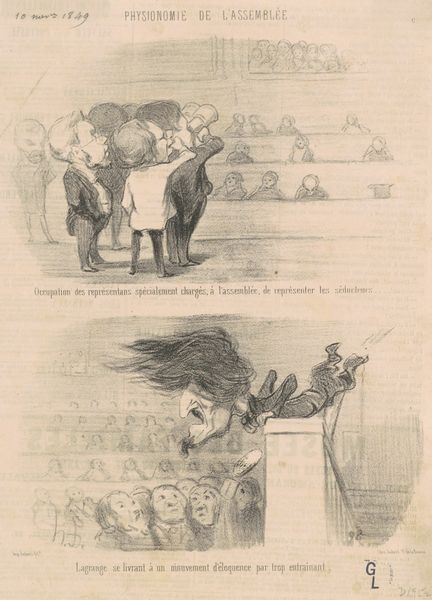
drawing, lithograph, print, pen
#
drawing
#
imaginative character sketch
#
quirky sketch
#
lithograph
# print
#
caricature
#
pencil sketch
#
sketch book
#
figuration
#
personal sketchbook
#
idea generation sketch
#
sketchwork
#
sketchbook drawing
#
pen
#
genre-painting
#
history-painting
#
storyboard and sketchbook work
#
sketchbook art
Copyright: National Gallery of Art: CC0 1.0
Curator: This lithograph, "Vue de M. Dupin se rendant a l'assemblée", or "View of Mr. Dupin Going to the Assembly", dating to the 19th century, is by Honoré Daumier. Editor: It immediately strikes me as satirical, even grotesque. The figures are so exaggerated, almost nightmarish. Curator: Daumier was a master of social and political critique through caricature. This work captures, in two registers, the performative nature of political life in 19th-century France, offering an implicit judgement of both Dupin and the assembled audience. He captures Dupin, en route to the assembly, followed by musicians as if heralding him and then we also get a glimpse into what occurs *at* the assembly. The contrast is hard to miss. Editor: Absolutely. The procession emphasizes Dupin’s self-importance, his head comically large. Do you think this amplification of features targets Dupin himself, or perhaps the culture of personality in politics more broadly? Curator: Given Daumier's radical republicanism, it's a stinging commentary on the French political landscape following the July Revolution. His critiques consistently challenged the powerful and privileged, and his skill was in linking the micro and macro injustices in the social order of France. In the image, the lower panel illustrates a similarly critical view, portraying those witnessing the events. Do you get a sense that this commentary of his continues to be relevant in politics? Editor: Yes, the spectators in the second scene seem either bored, bemused, or actively repulsed—a harsh indictment of the political class of the time and perhaps our own. Daumier's use of lithography also allowed these images to be widely distributed, fueling public debate. We can draw clear parallels with contemporary political cartoons that challenge authority. His use of the medium, therefore, is deeply embedded in both history and our own present. Curator: Precisely. It's a reminder of art's enduring power to reflect, question, and even shape public perception. Editor: A very relevant perspective, revealing how art intervenes in the narratives of power and politics.
Comments
No comments
Be the first to comment and join the conversation on the ultimate creative platform.
